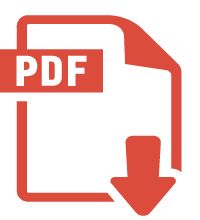SetFont: Set Current Font [ 21 ]
Description
Set current font with which subsequent text is to be output by either Text(), Write() or Cell() functions. This function takes 3 parameters:
- Font Family: character string which may take five values which points at one of the 14 type 1 character fonts supported by PDF format without their being embedded in target file: Arial, Times, Courier, Zapfdingbats and Symbol.
- Font Syle : character string which points at the style of the font: can be either empty string (Normal style) or any combination of 3 charaters B, I, U: B meaning Bold, I meaning Italic and U meaning Underline. NB: a value of N is equivalent to an empty string.
- Font size : float number in the range 4 -> 72 which is the size of the character font to be applied.
- Helvetica name is systematically replaced by Arial, so that for either names may be used.
- For Symbol or ZapfDingbats fonts, Style is ignored. In other words, this style parameter is taken into account only for "Courier", "Arial" or "Times".
- Although empty string are supported for font style, it is nevertheless recommanded to use "N" instead, N standing for Normal. When this instruction is found in forms, N is mandatory because for technical reasons, empty strings are not supported when read from forms
C calling syntax
void SetFont (char *font_family, char *font_style, float font_size)
Cobol calling syntax
Call "SetFont" Using by value Pt1, Pt2, W.
C sample code
#include "fpdf.h"
static char f_ini ??(??) = ??< "ini??/??/demofpdf.ini" ??>;
static char f_out ??(??) = ??< "pdf??/??/demo_a.pdf" ??>;
/* ----------------------------------------------------------------- */
int main (int argc, char *argv [])
??<
NewPdfy (f_ini, 1);
AddPage ("P");
SetFont ("Times", "B", 24);
SetTextColor (0, 100, 200);
Text (20, 25, "What is written below is TRUE");
SetTextColor (0, 200, 100);
Text (20, 50, "What is written above is FALSE");
Output (f_out);
??>
Cobol sample code
Procedure division.
Set Pt0 to Address of T0.
Set Pt1 to Address of T1.
*
String 'DD:FINI' Low-Value delimited by size into T0.
Move 2 to NbPages.
Call "NewPdfy" Using by value Pt0, NbPages returning PdfRC.
*
String 'P' Low-Value delimited by size into T0.
Call "AddPage" Using by value Pt0.
*
Move 20 to W.
String 'Times' Low-Value delimited by size into T0.
String 'N' Low-Value delimited by size into T1.
Call "SetFont" Using by value Pt0, Pt1, W.
*
Move 0 to R.
Move 100 to G.
Move 200 to B.
Call "SetTextColor" Using by value R,G,B.
Move 0 to R.
Move 100 to G.
Move 200 to B.
Call "SetTextColor" Using by value R,G,B.
Move 20 to X.
Move 25 to Y.
String 'What is written below is TRUE ' Low-Value delimited by size into T0.
Call "Text" Using by value X, Y, Pt0.
*
Move 200 to G.
Move 100 to B.
String 'What is written above is FALSE ' Low-Value delimited by size into T0.
Move 50 to Y.
Call "Text" Using by value X, Y, Pt0.
*
String 'DD:FOUT' Low-Value delimited by size into T0.
Call "Output" using by value Pt0.
*Description of sample code
This piece of code illustrates the most basic functions found in FPDF4ZOS interface. - NewPdfy() --> Initialisation of a pdf context - AddPage() --> As it says - SetFont() --> Set current font - SetTextColor() --> Set Text Color - Text() --> Write a piece of Text at position [X,Y] - Output() --> Output PDF file taking into account all the instructions invoked since context initialization
See sample source code in 'C' as well as PDF execution result - NB: For encrypted PDFs, user password is USER-PSWD
